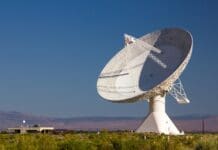
This post is also available in:
 עברית (Hebrew)
עברית (Hebrew)

By Dudi (David) Yaron
During the Second Lebanon War (2006) known as Operation “Change of Direction” the Israeli Air Force, within just 34 minutes, destroyed the majority of Hezbollahs’ long-range rockets. During operation Protective Edge the Air Force succeeded where it failed during the Second Lebanon War.
Operation “Change of Direction” (07/13/2006) shocked Hezbollah, because within just a few minutes they lost their primary strategic weapon. They were astonished by the detailed and accurate intelligence which the Israelis clearly had at their disposal, without which such an operation could not exist, let alone succeed. The Air Force was less successful when dealing with the lighter rockets aimed at northern Israel. Only when ground forces advanced into southern Lebanon these rocket attacks diminished.
In the Gaza Strip during Operation Protective Edge the Air Force is contending with very different challenges than those faced in Lebanon. Gaza is a small area of territory, meaning only a limited number of aircraft can operate there at the same time.
On the other hand, and contrary to the Second Lebanon War, in the Gaza Strip, the Israeli air force does not have to contend with anti aircraft defenses, and there’s no need to assign aircraft to defend against enemy fighter jets.
Hamas does not have heavy rockets, not to mention missiles similar to those that were destroyed from the air at the start of the Lebanon War. These missiles are generally carried on trucks or launchers, and can be more easily detected. The lighter rockets Hamas possesses are mostly buried underground, scattered through built up and well populated territories. Since the ground forces did not get involved at first, the task of locating and destroying these rockets and their launch positions, fell almost exclusively on the shoulders of the Air Force.
iHLS – Israel Homeland Security
If Hamas was relying on the limited success of the Air Force to locate short- and mid-range, similar to the Second Lebanon War, the terror organization was sorely disappointed. Over the last eight years, the Israeli Air Force made some significant advancements in a number of key areas. Some examples are: Massive deployment of unmanned drones, both passive and offensive; transferring information or informing the various parties involved in the fighting in real time; advanced armaments and skilled operators both in air and on the ground, allowing for highly precise target detection and destruction, even in densely built areas.
Results of this air operation have been substantial, although air strikes apparently have completely stopped the self-production system of Hamas rockets. Estimates suggest that the Hamas are left with only a third of the rockets they had at the start of the campaign. As a result, Hamas is becoming more measured in launching rockets. No more rounds of missiles haphazardly fired in the hope that a single one may breach the Iron Dome and hit a target. Now individual rockets are fired at central cities, in the hope that if they do not reach their destination, at least they may create harrassment and disruption of normal life, even if for only a few minutes.
As things stand now (and totally opposed to the situation during the Second Lebanon War) ground troops will withdraw from the Gaza Strip with the completion of destroyed tunnels, and the rocket-hunting work will continue and remain in the hands of the Air Force.
Dudi (David) Yaron and author of military thrillers, Lt. Col. (ret.)Air Force

























